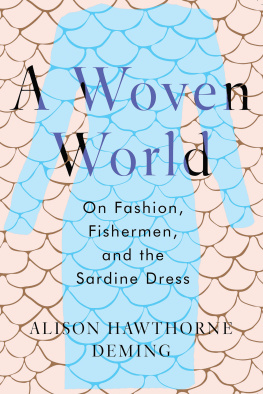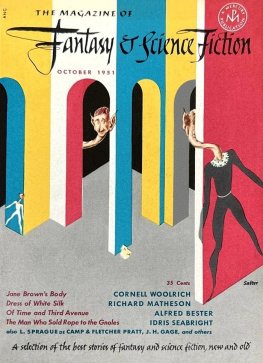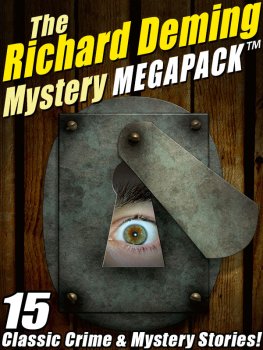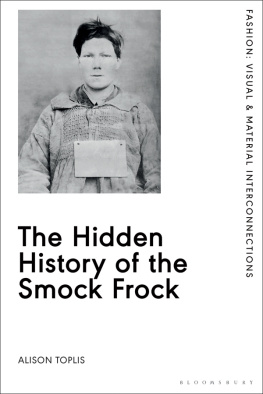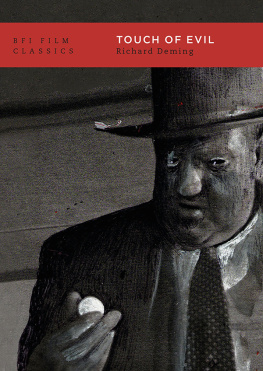Table of Contents
Guide
Page List
A WOVEN WORLD
ALSO BY ALISON HAWTHORNE DEMING
NONFICTION
Zoologies
Writing the Sacred into the Real
The Edges of the Civilized World
Temporary Homelands
POETRY
Stairway to Heaven
Death Valley
Rope
Genius Loci
The Monarchs
Science and Other Poems
A Woven World
ON FASHION , FISHERMEN , AND THE SARDINE DRESS
ALISON HAWTHORNE DEMING
COUNTERPOINT
Berkeley, California
For Lucinda
Things outlast us... they carry the experience they have had with us inside them and are... the book of our history opened before us.
W. G. SEBALD
all was woods seen from a train
no sooner glimpsed than gone again
but those immortals constantly
in some measure reassured me
W. S. MERWIN
CONTENTS
A WOVEN WORLD
THE KITCHEN WING OF OUR 1864 CASTALIA COTTAGE HAD BEEN slumping down into the earth for decades. Sill beams laid on bare soil had crumbled, making the walls sink. The shelves that held our dishes and glassware had tilted wallward. The floor listed and rippled like a fun house. A gap had grown between the kitchen wing and the main house, inviting rain, mice, and fearsomely huge black ants to run rampant, each in their season. After my parents were gone, stewardship of the summer place became the price I paid for spending a few months each year in the Canadian Maritimes.
The house, on the other hand, spent the whole year on the stormy seashore of the Long Bank, battered by wind and rain and snow and ice, saturated with fog and salt air, invaded by mold and mildew. The roof shingles were busting up from wear, the old brick chimney sieved creosote into rainwater and snowmelt, making gruesome watercolor abstractions on the ceilings. And while the old fieldstone cellar walls held generally upright, one corner had caved to external forces. The house was unmaking itself. Half of my neighbors told me to finish the job and tear the whole thing down. One hundred and fifty years is long enough, they said. The other half said, How could you tear that house down? Its been here one hundred and fifty years. Who built that house anyway? they asked. Then the stories began. A fisherman grew up here who was lost at sea for a week in his dory. And the crusty quips, relegating me to outsider status though our family had owned the place since 1957. Youre livin in my grandfathers house. The more I learned about the place, the more I imagined the lives that had gone before me and came to feel somehow that I was their keeper. I knew the house would not go down on my watch. At least not the whole of it.
I had the kitchen wing torn down and hired Larry Small to reno what remained. New windows and doors, gut out plaster, insulate, new pine tongue-and-groove boards for the walls. No kitchen. No bathroom. A camp sink. It will become an artist studio for my daughter, who plans to keep our family story moving forward in this place.
Demolition has its pleasures. In two hours a backhoe and dump truck can turn a house into a vacant lot. A few bites through the roof, a few scoops of lath and plaster, smashed windows and linoleum, and the wing was smoothed to bare dirt, an open space on the land as it had been before the cottage was built. The demolition was a catharsis. All those years of dithering about what to do with the ruin, all those years of family argument and avoidance and lack of resources (financial and emotional) gone with the dump truck rumbling down the road. Maybe there were ghosts from the family before us who felt the relief as well. I dont really believe in ghosts as material apparitions of the dead. But our dead do live with us as specters in the mind. What do they ask of us? It seems at the very least they ask for stories that will hold them among the living. This is no less true for our ecological losses than for our familial ones.
Heavy machinery is not discerning in the way it unmakes things. But a carpenternow that is another matter. Larry worked to strip down the plaster walls of what remained. Having worked on houses old and new on the island for forty years, he kept an eye out for surprises that would emerge from under the plaster. Carpenters around here leave time capsules for those who find their way decades later into the interior of a house. I found This house built in 1864 written in carpenter pencil on a plank of the old cottage. And the shed had been signed on a ceiling plank by Harry Dunbar, as if it were a painting. Larry keeps up the tradition. He left a time capsule buried in the wall of the boat barn he renovated for me into what I now use for a summer cottagea secret compartment with a Pepsi can and this, written in Sharpie: Conversion reno by Larry Small, Aug 9 2013. Gas $1.35/LT. Beer $23.00/Doz. A cool damp summer so far, lots of herring in the weirs, and reports that a great white shark took a big gray seal off swallowtail light... cool shit.
The uncanny thing about demolition is the objects turning up that accidentally found their way into walls. A shell button that slipped through a crack, sure. A mouse skeleton, of course. But how did the hand-carved wooden shoe last end up nestled between the wall studs? And the tiny awl with a needle point that fit the prick marks around the lasts perimeter? Someone who lived here either made or repaired his own shoes. And the heart-shaped padlock big as my fist, rusted permanently open? The door handle, the tablespoon, the fancy brass hatpin with a big oval cut-glass jewel? Larry had a theory for the hatpin that had fallen down with the plaster and lath of a ceiling hed demolished. A child picks up his mothers hatpin from her dresser, a precious object, and carries it away to his upstairs bedroom. Mother storms around the house searching for the treasured ornament. There are not many ornaments in a nineteenth-century fishermans house. The child cowers in fear of being apprehended as a thief. As mother mounts the steep stairs huffing with rage, the child hides the hatpin under a loose floorboard. Voila, it lands on Larry Smalls head a hundred years later.
Once we were down to the bones of the old cottage, the beams and planks told storiesplanks wider than any tree alive today in these parts, studs cut rough with bark intact on the uncut edge, square-cut blacksmith-forged nails. Larry was surprised to see, at one juncture where mortise and tenon met holding together two beams, that Roman numerals had been punched with a chisel into the wood to match up the six-by-six beams. XII on the rafter. XII on the vertical beam. Match the matching numbers, and the house clicks together. On anotherIIII. Cut to fit, then assembled like an IKEA kit, directions right on the structural elements. I dont know why I found this discovery so moving. The makers hand was evident in so many aspects of the cottages bonesadze marks on the beams and suchand yet this crisp detail made me feel so much love for the labor that went into the house, for the intelligence and practicality of marking the beams this way as they were cut in preparation for assembling. All you need is one two-inch chisel to mark all the Roman numerals as high as you need to go.

